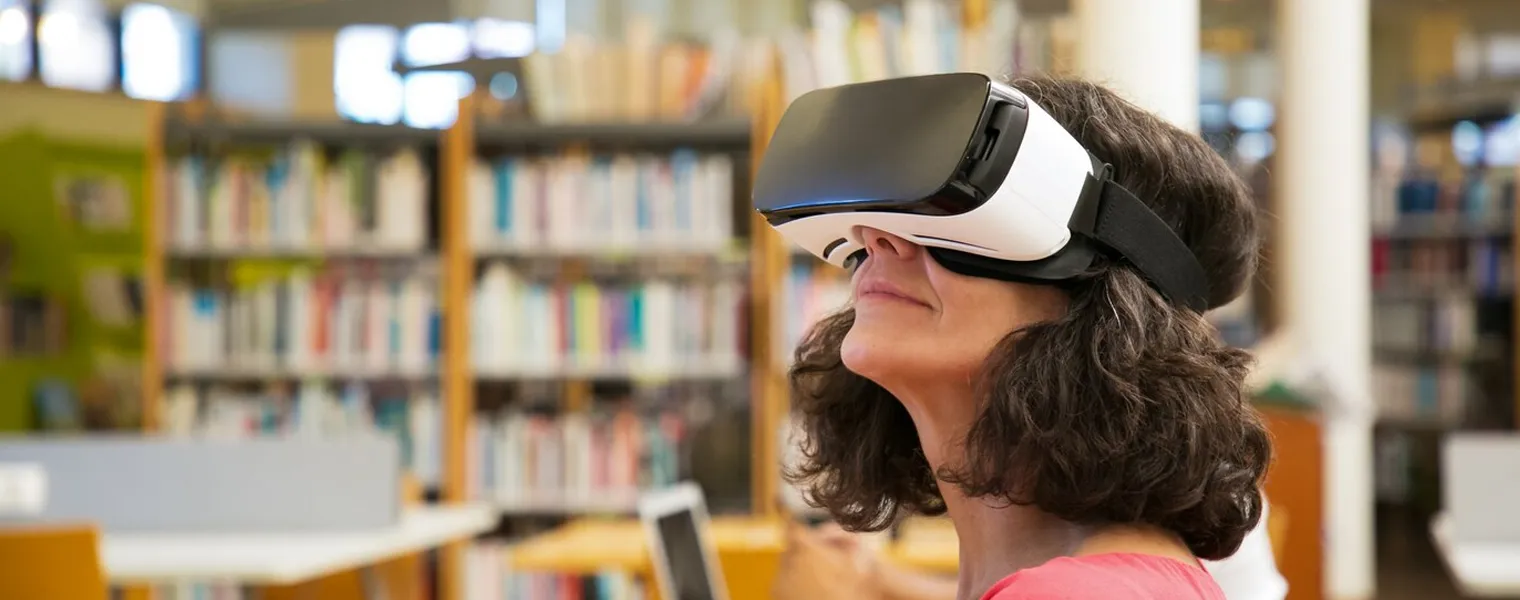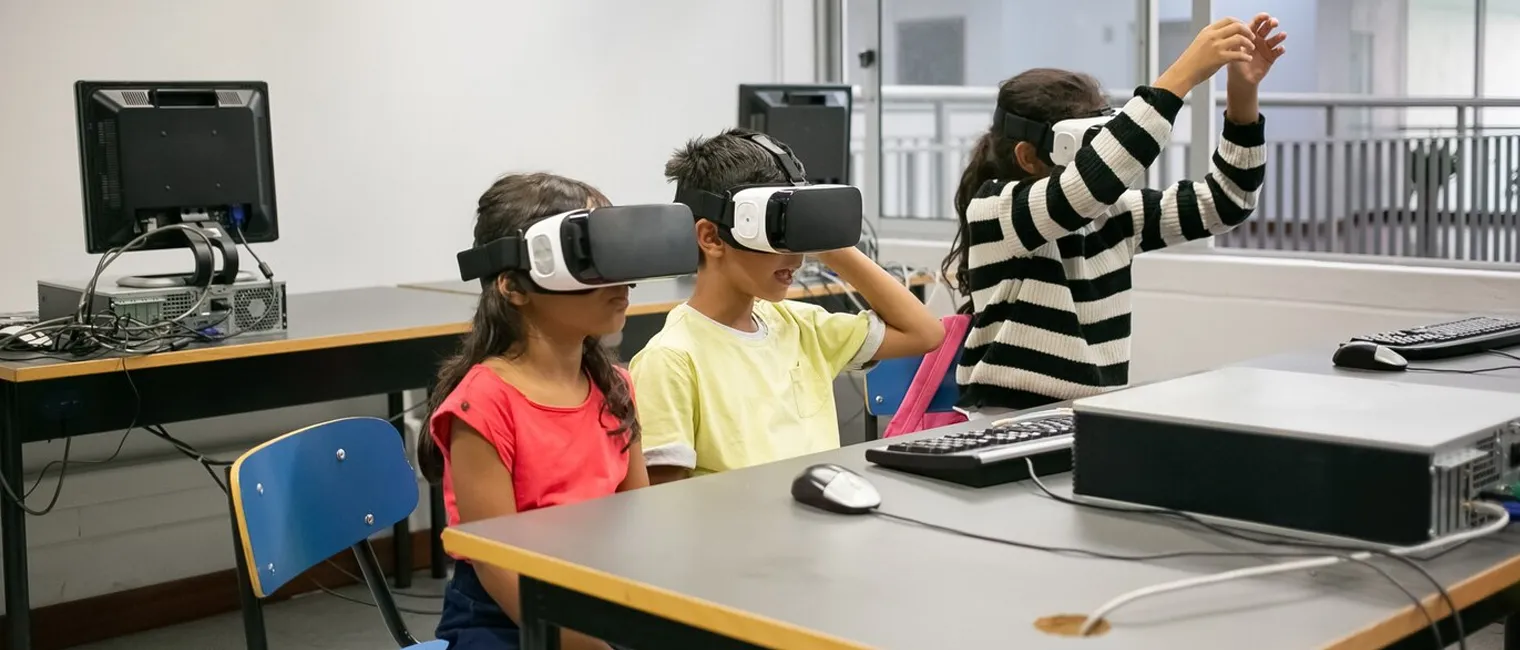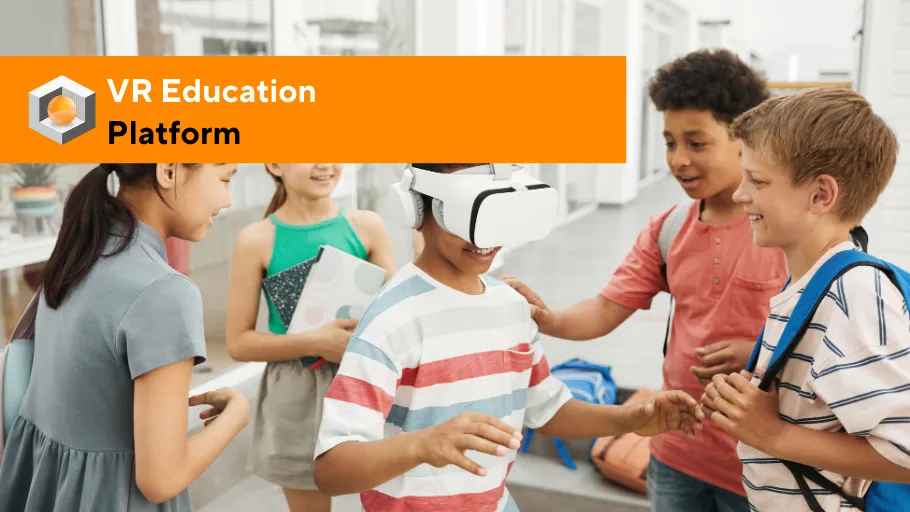VR Education Platform solutions are transforming traditional learning environments by integrating immersive technology into educational practices. These platforms enable educators and learners to engage in interactive, lifelike simulations that enhance understanding and retention. Unlike traditional methods, which rely heavily on passive learning, VR platforms actively immerse users in a virtual environment where they can visualize abstract concepts, interact with 3D models, and participate in realistic scenarios.
VR Education Platform applications extend beyond the boundaries of conventional classrooms, providing learners with access to experiences previously unattainable. Whether it’s exploring the intricacies of the human anatomy through modules like the Anatomy VR Brain Module or diving into complex engineering designs in a virtual workshop, VR education platforms cater to a wide range of disciplines. With the tools offered by RoT STUDIO, institutions can create tailor-made content that bridges the gap between theoretical knowledge and practical application, ensuring learners are better prepared for real-world challenges.
What is VR in Education?
Virtual Reality (VR) is revolutionizing the education sector by providing immersive, interactive, and engaging learning experiences. Unlike traditional teaching methods, VR enables students to explore concepts in a virtual environment where they can visualize, interact, and learn in ways that were previously impossible.
How VR Enhances Education
- Interactive Learning: VR allows students to interact with 3D models, environments, and simulations, making abstract concepts more tangible. For instance:
- In biology, students can explore a virtual model of the human body, examining the Anatomy VR Brain Module or Musculoskeletal System Module to understand complex structures and functions.
- In history, they can visit historical sites virtually, immersing themselves in the context of events.
- Safe Experimentation: In science education, VR offers a platform for conducting experiments in a controlled and risk-free environment. Students can explore chemical reactions, physics experiments, or even engineering prototypes without the constraints of physical resources or safety concerns.
- Accessibility and Inclusivity: VR eliminates geographical and physical barriers, providing equal access to quality education. Using platforms like RoT STUDIO, educators can create content tailored to diverse learning needs, making education more inclusive for students with disabilities or limited resources.
- Engagement and Motivation: The immersive nature of VR keeps students engaged, reducing distractions and fostering curiosity. Interactive simulations and gamified elements make learning enjoyable and encourage participation.
How to Use VR in Teaching?
Integrating VR into teaching requires careful planning and the right tools to ensure that content aligns with educational goals. Platforms like RoT STUDIO simplify the process by offering user-friendly tools to design and implement VR-based lessons without requiring coding expertise.
Steps to Use VR in Teaching
- Identify Learning Objectives:
- Define clear goals for what students should achieve through the VR experience. For example:
- Biology lessons: Explore the Anatomy VR Brain Module to understand brain functions.
- Engineering classes: Use VR to prototype and test designs.
- Define clear goals for what students should achieve through the VR experience. For example:
- Create or Source VR Content:
- Use RoT STUDIO to create custom VR scenarios tailored to your curriculum. The drag-and-drop interface allows teachers to build immersive lessons easily.
- Alternatively, access pre-designed modules for topics like healthcare, history, or environmental science.
- Integrate VR into the Curriculum:
- Combine VR activities with traditional teaching methods to reinforce learning. For example:
- Use VR for interactive sessions, followed by discussions or written assignments to reflect on the experience.
- Combine VR activities with traditional teaching methods to reinforce learning. For example:
- Engage Students Through Collaboration:
- Encourage group activities in VR, such as virtual field trips or collaborative problem-solving scenarios. This fosters teamwork and enhances interpersonal skills.
- Assess Learning Outcomes:
- Incorporate quizzes, virtual challenges, or practical exercises within the VR environment to evaluate student progress. Platforms like RoT STUDIO can include analytics tools to track engagement and comprehension.
What Does VR Mean in Special Education?
As software engineers at RoT STUDIO, we have witnessed firsthand how Virtual Reality (VR) is revolutionizing the landscape of special education by providing cutting-edge tools and methodologies to meet the diverse learning needs of students. Immersive technologies enable us to design personalized, interactive, and inclusive learning environments that transcend physical and geographical limitations. By leveraging VR, educators can deliver transformative experiences that were previously unattainable through conventional methods, effectively addressing the unique challenges faced by learners in innovative and impactful ways.

How VR Supports Special Education
VR technology provides a versatile platform for addressing the cognitive, physical, and sensory needs of students in special education programs. Through customized virtual environments, learners can develop critical skills, gain confidence, and engage with educational content in meaningful ways. Key applications include:
- Enhancing Social Skills:
- Students on the autism spectrum can practice real-life scenarios such as grocery shopping, navigating public spaces, or participating in social interactions in a safe and controlled VR environment.
- Customizable simulations created using RoT STUDIO empower educators to design exercises tailored to individual needs, ensuring a supportive learning experience.
- Developing Cognitive Abilities:
- VR enables students to strengthen problem-solving, memory, and decision-making skills through interactive games and scenarios.
- For instance, virtual puzzles or logic-based challenges can improve cognitive functioning while maintaining engagement and motivation.
- Improving Motor Skills:
- Students with physical disabilities can engage in virtual tasks that enhance hand-eye coordination, fine motor skills, and spatial awareness.
- By using gamified approaches, VR makes repetitive exercises enjoyable, encouraging consistent participation.
- Building Independence:
- VR allows students to explore tasks that foster independence, such as managing daily routines or navigating transportation systems.
- Scenarios like virtual cooking or practicing time management in a simulated classroom setting empower students to build practical life skills.
Why VR is Effective in Special Education
The flexibility and adaptability of VR make it uniquely suited to special education. Traditional teaching methods often fail to fully address the diverse requirements of students with disabilities, but VR overcomes these limitations through:
- Personalization: With RoT STUDIO, educators can design unique VR modules tailored to each student’s learning goals, challenges, and preferences.
- Engagement: Immersive environments keep students focused, reducing distractions and increasing participation.
- Inclusivity: By removing physical barriers, VR ensures that all students, regardless of their abilities, can access enriching educational experiences.
Examples of VR Applications in Special Education
- Sensory Integration Therapy:
- VR environments can help students with sensory processing challenges adapt to stimuli like lights, sounds, and textures in a controlled setting.
- Transition Planning:
- For older students, VR can simulate job interviews, workplace scenarios, or higher education environments, preparing them for the next stage of their lives.
- Emotional Regulation:
- VR scenarios designed for relaxation and mindfulness can support students in managing anxiety or stress.
With tools like RoT STUDIO, educators have the power to create inclusive and engaging experiences that cater to the unique needs of students in special education. These innovations not only enhance learning but also provide students with the skills and confidence they need to thrive.

Educational VR Apps
As software engineers at RoT STUDIO, we have seen how educational VR applications are redefining the delivery and consumption of learning content, unlocking unprecedented opportunities for immersive and interactive experiences. These applications empower educators to design dynamic lessons that allow students to engage with virtual environments, visualize complex concepts, and develop real-world skills within a safe, controlled setting. Through our work on numerous VR projects, we have successfully transformed traditional educational approaches into engaging, interactive processes that promote deeper understanding and meaningful learning outcomes.
The versatility of educational VR apps extends across various disciplines, from science and history to engineering and healthcare. Apps like the Anatomy VR Brain Module allow students to explore detailed 3D anatomical models, providing an intuitive way to understand the human body. Similarly, history apps recreate ancient civilizations, letting learners virtually walk through historical sites and immerse themselves in the context of past events. These apps are not just limited to enhancing academic knowledge but also support skill-building and personal development through gamified learning approaches.
VR Tools for Education
The success of VR in education is heavily dependent on the tools used to create and implement immersive learning experiences. RoT STUDIO stands out as a comprehensive platform designed to empower educators with intuitive tools for designing customized VR content. Unlike traditional development methods, which require extensive technical expertise, RoT STUDIO simplifies the process with its drag-and-drop interface, making it accessible even to those without coding knowledge.
Features of VR Tools for Education:
- Customizable Content Creation:
- Educators can design virtual lessons tailored to specific subjects or learning objectives. For example:
- Science teachers can create interactive chemistry labs.
- History educators can develop virtual tours of archaeological sites.
- RoT STUDIO allows complete customization to fit the curriculum’s unique requirements.
- Educators can design virtual lessons tailored to specific subjects or learning objectives. For example:
- Collaboration and Accessibility:
- Students and teachers can collaborate in shared virtual spaces, regardless of their physical locations. This breaks down geographical barriers and ensures equal access to quality education.
- RoT STUDIO’s VR tools are platform-agnostic, ensuring compatibility with a range of VR devices.
- Assessment and Feedback:
- Integrated analytics help track student performance and engagement, enabling educators to adjust content for improved outcomes.
- Quizzes, challenges, and interactive tasks within VR environments allow real-time assessment of comprehension and skill acquisition.
- Engagement Through Gamification:
- Gamified elements like virtual rewards and interactive challenges enhance student engagement, making learning enjoyable and memorable.
The tools provided by platforms like RoT STUDIO enable educational institutions to embrace the potential of VR fully. By integrating these tools into the classroom, teachers can create an inclusive, engaging, and effective learning environment that caters to diverse educational needs and prepares students for future challenges.
What is the Best VR Platform for Education?
Choosing the best VR platform for education requires a deep understanding of how technology can enhance learning outcomes, foster engagement, and provide a seamless user experience. A high-quality platform should combine ease of use, adaptability, and robust tools for content creation.
Why RoT STUDIO Stands Out
RoT STUDIO has established itself as a leading VR platform for education by prioritizing accessibility, customization, and collaboration. Designed for educators and institutions, it allows users to create immersive educational experiences without requiring technical expertise. Here’s why it’s the ideal choice:
- Ease of Use:
- RoT STUDIO simplifies VR content creation through its intuitive drag-and-drop interface. Educators can design virtual lessons and simulations without needing coding or advanced technical skills.
- For example, a teacher can easily create a virtual biology lab using pre-built elements, such as 3D models of organs and systems, to align with curriculum objectives.
- Customizable Learning Experiences:
- The platform supports the creation of tailored VR modules for diverse educational needs, from interactive science experiments to historical site tours.
- In healthcare, modules like the Anatomy VR Brain Module or Surgical Catheterization Procedure can be customized to provide realistic training scenarios for students and professionals.
- Scalability and Collaboration:
- RoT STUDIO enables collaborative learning by allowing multiple users to interact in a shared virtual environment. Students from different locations can work together on group projects, fostering teamwork and communication skills.
- The platform’s scalability ensures it can be implemented across institutions of varying sizes, from small schools to large universities.
- Engagement and Interactivity:
- Immersive learning environments provided by RoT STUDIO captivate students’ attention and encourage active participation. Gamification features, like rewards and challenges, make lessons enjoyable and memorable.
- Simulations such as virtual treasure hunts or interactive historical expeditions engage learners in ways that traditional methods cannot.
- Comprehensive Analytics and Feedback:
- Built-in analytics tools help educators track student progress, identify areas for improvement, and refine their teaching strategies.
- Quizzes and interactive assessments within VR scenarios provide real-time feedback, ensuring that learning objectives are met.
Versatility Across Disciplines
RoT STUDIO’s adaptability makes it suitable for a wide range of subjects and educational goals. Some examples include:
- STEM Education: Virtual labs for physics, chemistry, and biology enable hands-on learning without the need for physical resources.
- Arts and Humanities: History and literature come to life as students explore ancient ruins or immerse themselves in famous literary settings.
- Professional Training: Healthcare and safety programs, such as HSE Risk Hunt or Colorectal Surgery Nursing, prepare students for real-world challenges in a risk-free environment.
By combining cutting-edge technology with an educator-friendly interface, RoT STUDIO empowers institutions to embrace the full potential of VR in education. This platform not only enhances learning but also prepares students for the demands of the modern world, making it the best choice for innovative educational solutions.

